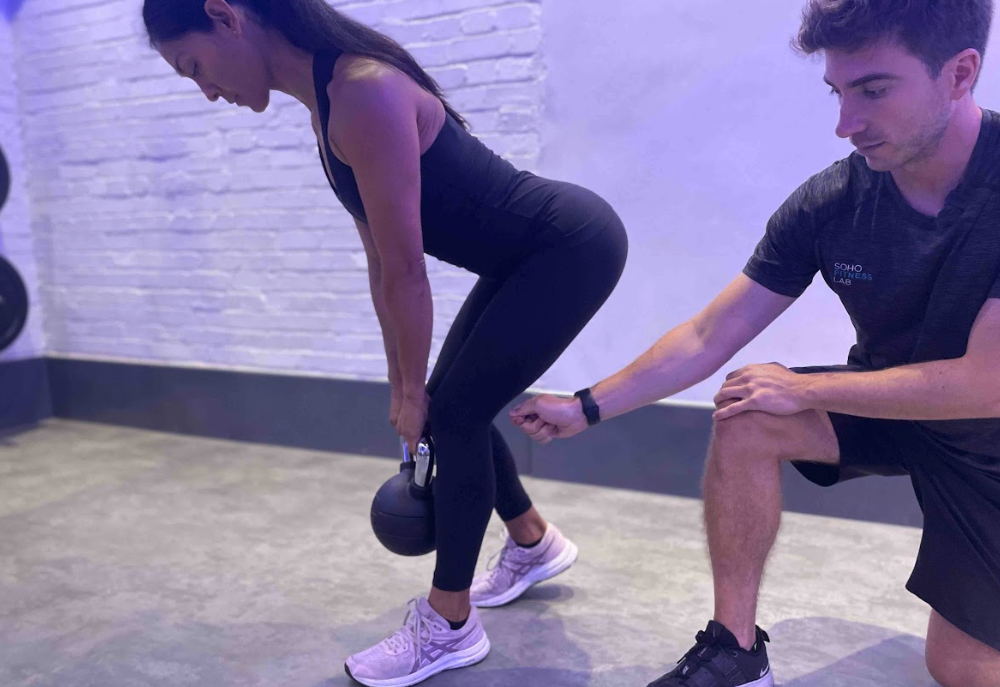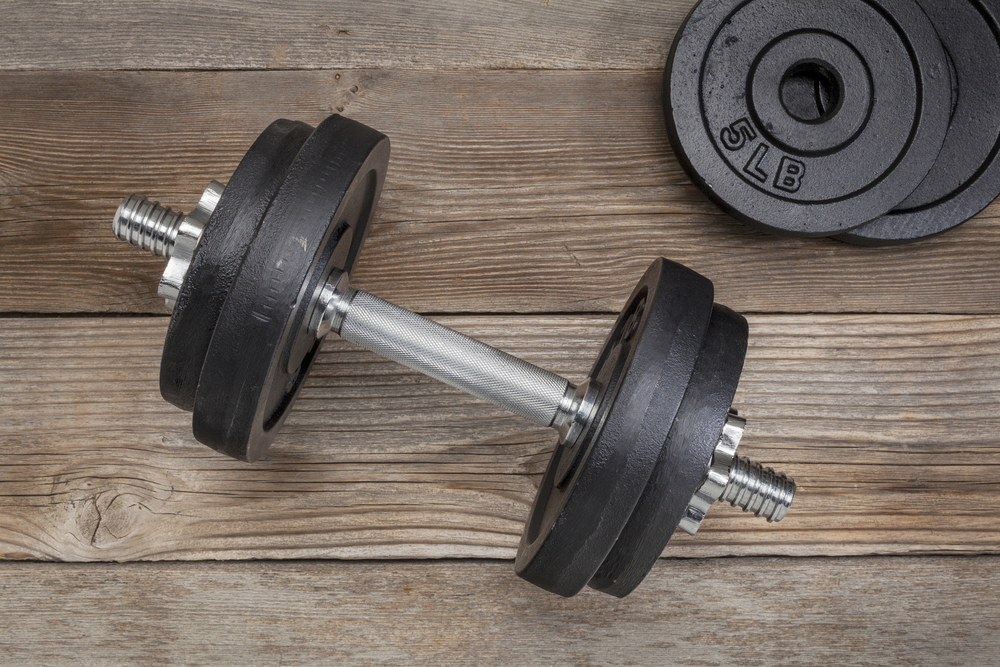This is part of our series of blogs on the posterior chain. In this blog, we’ll take a detailed look at the best posterior chain dumbbell exercises – including why we consider them to be the best, and how to perform them properly.
Why are dumbbell exercises an important part of a posterior chain workout?

In comparison to barbell or some machine movements, dumbbell exercises allow for greater emphasis on unilateral, or single limb, training. Unilateral training is important for correcting muscle imbalances, or ensuring they don’t occur. While everyone is likely to have some muscle imbalances, too great of an imbalance can be a predictor of injury. Using dumbbells to train unilaterally can ensure each side of the body gets equal attention.
Linked to this unilateral emphasis, is the greater focus on stabilising the body required with dumbbells. Training one side of the body at a time, with no weight on the other side to counterbalance forces your core to do more work to stabilise yourself. For certain exercises, using dumbbells will allow for a greater range of movement which may stimulate greater hypertrophy.
B Stance Romanian Deadlift (RDL)
This movement can be performed with a dumbbell in each hand or loaded contralaterally (dumbbell in the opposite hand) which will require more stability.
- Start in a staggered stance with most of your weight on your front foot and only the toes of your rear foot touching the ground behind.
- Hinge your hips back first while keeping your rear foot in contact with the floor. Maintain a neutral spine position. Imagine you’re closing a car door with arms full of shopping.
- While hinging your hips back, lower the weight towards the floor. Allow a slight bend in the knee until you feel a good loaded stretch without any unwanted spinal flexion.
- Return to the starting position, by engaging your glutes to push your hips forward.
You can progress the movement by placing the sole of your foot on a wall behind you, keeping only the tops of your toes on the floor.
Dead Stop Single Arm Row
- Set up like you would for a regular, bench-supported single arm row. Maintaining a neutral spine position throughout (your body should make a straight line from the head through the lumbar spine).
- Begin the movement with the dumbbell resting on the floor. Squeeze the handle as hard as you can and row the weight up in a sawing motion- that means bringing your elbow up and back towards the hip, not just up and down. Imagine you’re pulling through your elbow as though a chain is attached from it to the ceiling.
- To complete the rep, return the dumbbell to the floor, coming to a complete stop. Pause for a second or two, and repeat for the desired number or reps.
- If you find your core is a limiting factor in this movement, you can instead opt for a prone dumbbell row, using the bench to support your weight.
Bulgarian Split Squat
Also known as a Rear Foot Elevated Split Squat, this movement can also be performed with a dumbbell in each hand or loaded contralaterally which will require more stability.
- You can elevate your rear foot on a bench or a racked barbell with a pad. The lateral option is preferable as it allows greater freedom in setting a height that suits your anatomy.
- To set up, elevate your rear foot and position your front foot far enough away that the hips can sit into a single-leg squat position without the front foot coming off the ground. Actively grip the floor with the toes of the front foot.
- Brace your core and descend. Focus on keeping the hips moving straight up and down.
- Keep your upper body neutral or slightly leaned forward, keep the knees tracking over the toes and don’t allow your foot to lift from the floor. Drive through the front leg and press your foot into the floor. Imagine trying to leave a footprint in the floor as you press back up into the starting position.
- If the rear foot elevated variation is too tough, this can be regressed to a standard split squat with both feet on the floor.
Safety First
Remember, the movements and techniques you see demonstrated here are advanced exercises, and our team has practised them countless thousands of times. It’s always a good idea to have professional guidance when you’re exercising – and this is especially true when you’re using free weights.
If you’d like to talk to us about training with us here in London at our Soho, Fitzrovia, or Mayfair studios, we’d love to help. Equally, if you’re somewhere else in the world – we can be by your side virtually using our innovative online training app and video call guidance.

